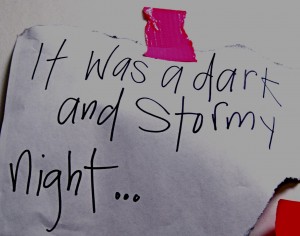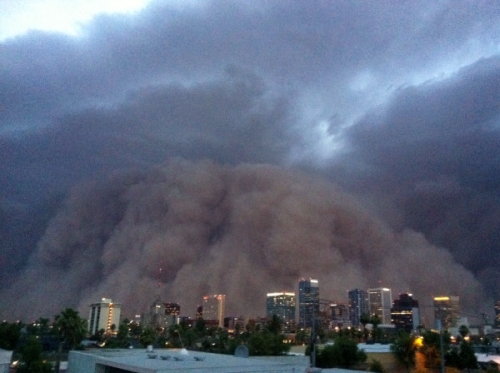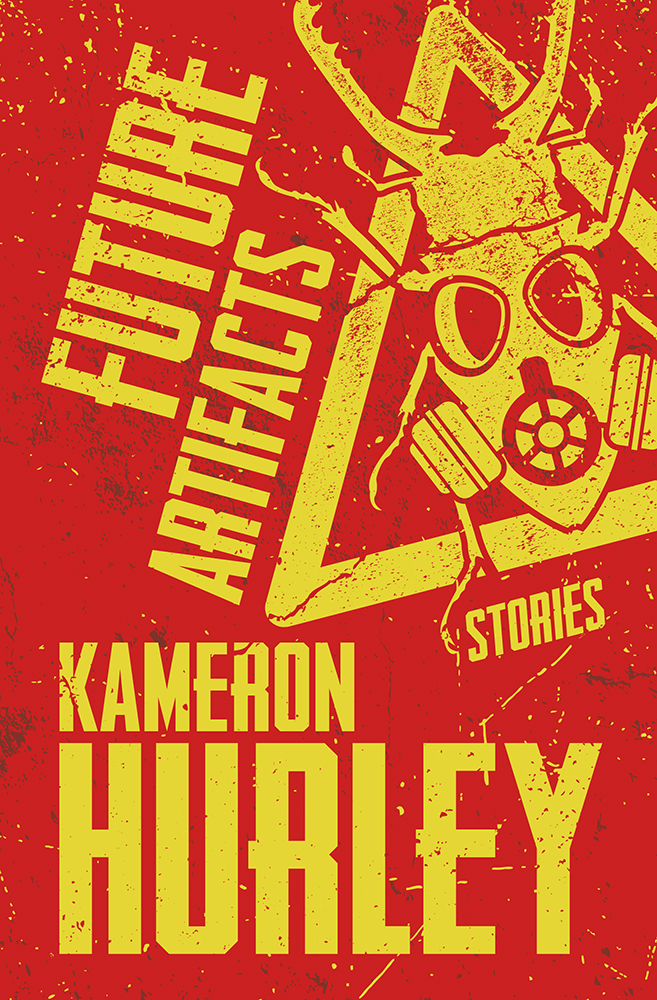
We’ve all experienced it: you’re reading along and you find a scene in a book that you could swear you’ve read a hundred times before – in some other book, or in some other show.
There’s a formula to much traditional storytelling, especially the stuff that’s written and/or produced very quickly. Formulas are great for creators. They help you bang out stories – whether it’s novels, short stories, TV or movie scripts – quickly. It’s the boy meets girl, boy loses girl, boy gets girl setup (always the boy doing the doing, of course). It’s the opening montage comments about a country in some travel show that asks a question, shots with happy locals, pretty scenery, ruminations on the question, and finally, an end-of-episode sum up that answers the question.
Frames and formulas have their place. They create very comforting stories. I like watching shows where I know that – unlike in real life – the bad guys are going to get it. One of the shows I saw falling into formula its second or third season was Burn Notice. There would be some ruminations on the overall plot arch, then the introduction of a Wronged Client who would enlist the help of the ex-spy and his team. The ex-spy would be reluctant, nearly turn them down, but be urged to take on their case by his team. They would vanquish the bad guys while sharing some McGyver-esque spy facts with the audience, save the Wronged Client, and meet for drinks afterward and touch on the overall plot arch for the show.
It’s nice to know the good guys win, and good people are saved, but to be honest, that formula was getting old. In Season 4, they started doing something different. The stories the Wronged Person told them weren’t always true. In fact, sometimes they were outright lies. The situations became less black-and-white and more complicated. Instead of every plan working, the first plan or two often failed. There were more double-crosses, more unexpected explosions, and a lot more gunfights. Main characters got shot, or kidnapped, or interrogated (sometimes by the supposed Wronged Client, sometimes by their own team members). Changing the formula resulted in a much higher level of suspense. The neat, cozy story I expected wasn’t so cozy after all (I recently watched one where the supposed Wronged Client was shot dead within the first 15 minutes of the show, and we learn that he wasn’t quite as Wronged as we thought). As a result, the show became much more interesting, and though I don’t think the writers have the guts to truly take out one of the show’s main characters the way, say, Joss Whedon would, I’m certainly a lot more interested and invested in these stories than I used to be.
One of the problems with being reasonably well-versed in genre tropes is that they’re easy to fall back on. When I’m writing fast, it’s easy to throw in the scene where they defuse the bomb with 1 second left on the clock, or have everybody speak a “common” tongue so you don’t have to deal with tricky stuff like who can understand what’s being said in what language, or god-like aliens ruled by logic who are trumped by the human spirit/power of our emotions, or those bizarre nursing scenes where a guy gets injured and a woman patches him up and they totally fall in love.
But what’s wrong with this stuff, really?
On the face of it, nothing. They’re good stuff. People like them. It’s why they endure. They’re comforting. In a world of chaos and infinite possibility, it’s sometimes nice to sit back at the start of scene and know exactly how it’s going to end (“Oh, she’s patching him now! Finally, they will fall in love!”).
Trouble is, if you’re going for maximum tension and suspense, the kind of thing that keeps even the most jaded reader hooked, you need to push beyond these cozy tropes. I recently finished reading Stephen King’s Misery (ha ha, I know). The guy’s early books have the most masterful plots because they are often so bloody unpredictable (I kept expecting that the movie ending was different than the book ending. I should have known King wouldn’t kill his Writer, but I totally expected it). The genius of Misery was in casting a totally mad and unpredictable antagonist. You really never knew what she was going to do next, and each random horror she came up with was more horrifying than the last. You kept thinking, “Surely, she can’t get any worse,” and sure enough, she did. And the ante was upped in such a way, and set up in such a way, that when all the horror happened, you totally believed it.
King also doesn’t fall into the superhero trap. His protagonists are totally ordinary people, and they act like the way real, flawed, terrified people would act. For every one of us who says, “I would fight back! I would totally beat that psycho up and escape!” there are those of us aware of exactly how pain and fear and sickness and terror can utterly transform a brave, reasonable person into a screaming, urinating, flailing wreck. His protagonists are, if nothing else, terrifyingly human… and masterfully flawed.
This brings me to why I’ve been thinking so much about clunking old tropey scenes lately. Last night, I finished a draft of a scene that anybody who’s ever read a book or seen a movie set in the desert has seen before. You’ve read this before:

The protagonists are trudging across a vast desert, either because they were dropped off there, driven there, or need to cross it to get somewhere. Their water has run out. They continue to trudge along. The sun is very hot. The sand is very hot. It is, indeed, very hot. They start dropping across the sand like flies, leaving a long trail of bodies along the way, until there’s only one person left, usually dragging another one with him, and still no sign of water, or an encampment. Death must surely be certain!
But, of course, we know death is anything but certain. In fact, we’ve read this so many times we KNOW it’s not.
When you read this scene you pretty much know that one of two things will happen: 1) the last person standing will find water right before they collapse 2) the last person will collapse and it will look like everyone dies. But then! They wake up and are being cared for by some local desert people and brought back to health.
Hurrah!
The reason this scene became so popular is because, well, the FIRST time you read it, it’s pretty suspenseful. I mean, your protagonists are in the desert! It’s hot! No water! No shelter! They’re going to DIE! The trouble is, when a scene has been done to death by everybody, the chances are your readers have read/seen it at least a couple of times. That means when they start the scene, they already know how it’s going to turn out. They’ll find water or the locals will save them. No worries.

And suddenly, this scene that was supposed to have such great suspenseful potential becomes something gimmicky and sad and… well, boring.
So I did what I do when I realize I’ve written something I’ve seen a million times (and don’t like. Oh, let’s be clear. There are some tropes I cling to so passionately that I won’t dump them, but that’s the subject of another post). I did some googling about the salt content of blood. I sat down and discussed the scene with J., and he made some suggestions about bugs, which led to me to thinking about a scene in the Conan movie when Conan attacks and eats a vulture while he’s hanging from a tree in the desert. And that got me to thinking about birds, and my world’s shape shifters, and maybe clouds of birds, and blood, and bugs. Hrm.
There are many ways to save your protagonists, but for me, it’s far more satisfying to figure out how the ways of the world and my protagonists’ own resourcefulness can help them save themselves. Maybe they don’t find water. Maybe no one saves them. Maybe they do something else.
It’s the “something else” that’s my job as a writer to figure out. That means sitting down and thinking about scenes, not just going with the first thing that occurs to me (because trust me, all my first ideas are crap). It means a lot of googling. And a lot of time at the library. Honestly, it hurts my head. I spent so long trying to figure out some truly strange tech for my same-world related short story, Angels and Avengers, that I pushed out the release date from September this year to September next year. I needed the time to gnaw on how to create something really different.
For instance, space travel tech in films hasn’t changed much since I was a kid. It’s all bulky suits and helmets and escape pods and cruisers. It about blew my mind the other day when I was rewatching Thundercats of all effing things and they board another ship by just beaming this laser/ray thing into it, cutting it open, and then having the boarding party walk across this ray of light and into the ship. No physical umbilicus. No leaping onto the ship and opening a hatch. Just, you know, BEAM OF LIGHT. Which got me to thinking about all the other stuff I make assumptions about when I’m writing.
For an SF/fantasy writer, there is nothing that will kill your fiction more quickly than falling into assumptions. I still do it all the time, and every time, I pay for it. I would rather say something ridiculous, though, like “She cut off her hair with a machete” (you can, in fact, saw off long hair with a very sharp machete [google it], though there has been some contention about that from readers) than just have somebody go to the barber. I would rather have people die who aren’t supposed to die. And heroes fail who aren’t supposed to fail.

Now I’m going back and re-writing my trudging-across-the-desert scene. It’s looking a lot different so far. There are no happy-to-save-you locals (there are, in fact, some “fuck you!” locals), and no nourishing water wells. Tough choices have to be made. Blood is spilled. And there are some fist-sized, flesh-eating bugs that show up to make things really interesting. Oh, sure, some people are “saved.” But some aren’t. Some plans fail. And coming out alive in this one has a lot more to do with digging deep and being resourceful than falling over and hoping for the best.
I know which one I find more interesting, and far more suspenseful.
Because the truth is, it’s honestly more fun if the bomb goes off, and nobody can understand each other, and the god-aliens are the unpredictable, overly-emotional ones. Why is it more fun? Because fewer people take the risk of writing it that way.
There are a bazillion people in the world who can write books. The only thing you’ve got on any of them is your ability to write something in a different way than other people are writing it. It’s filtering your words and worlds through your own unique experiences, and forging a road through the bloody fucking buggy volcanic spew of mud instead of happily skipping along on the pavement.
Ok, so, maybe that’s my road.

